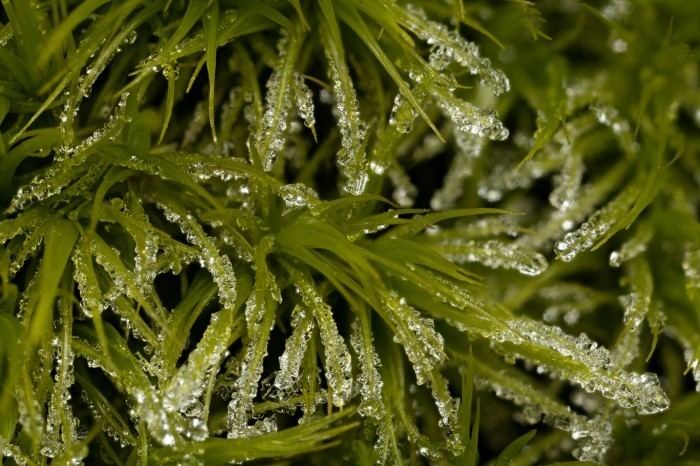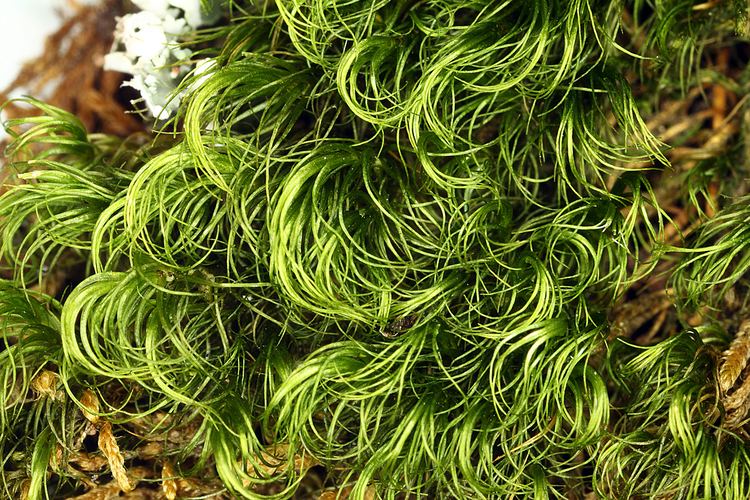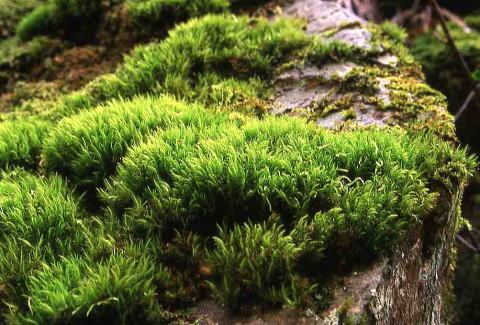Rank Species | Division Bryophyta | |
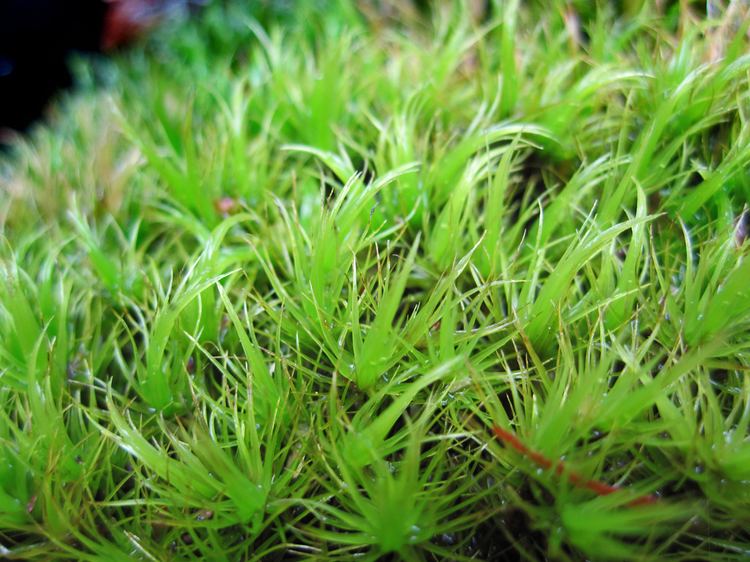 | ||
Similar Dicranum, Dicranum polysetum, Pleurozium schreberi, Dicranaceae, Hylocomium splendens | ||
Process of capture and translocation of raindrops in a clump of dicranum scoparium
Dicranum scoparium, the broom forkmoss, is a species of dicranid moss, native to North America, including the Great Lakes region. It usually forms tufts or mats on soil in dry to moist forested areas. Broom moss can be distinguished by its leaves, which strongly curve to one side.
Contents
- Process of capture and translocation of raindrops in a clump of dicranum scoparium
- Description
- Distribution
- References
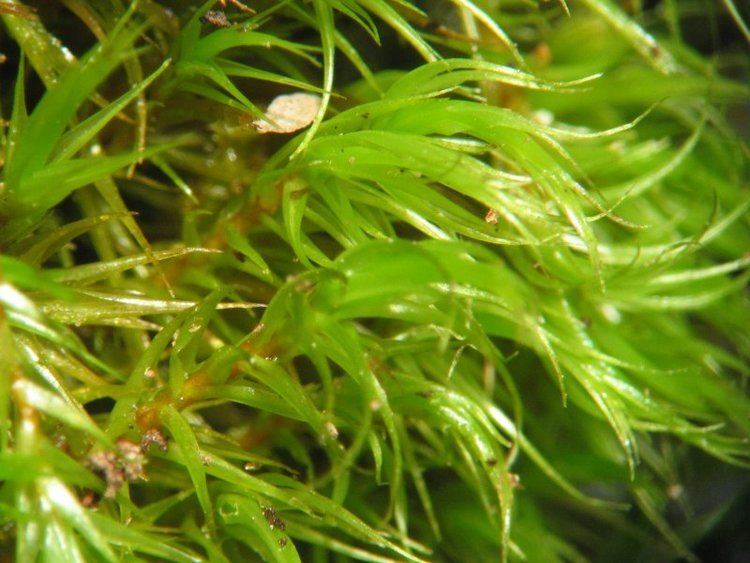
Description
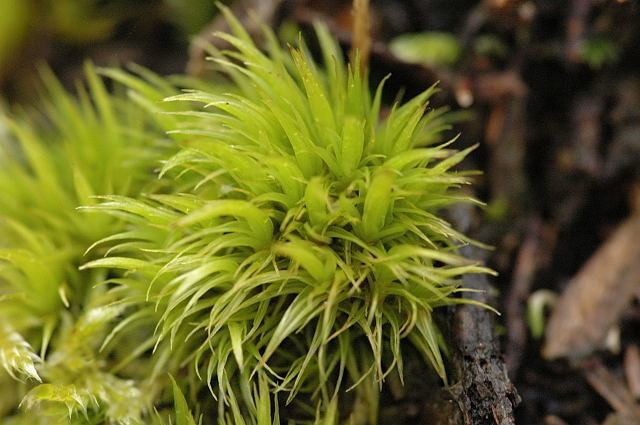
Broom forkmoss is usually robust and coarse, forming shiny tufts with woolly stems 2–8 cm high. The leaf midrib extends to the tip and usually has 4 ridges along its back. The leaves are 3.5–8 mm long, lance-shaped with a long, slender point, and strongly toothed along the upper third. Most leaves will be folded and curved to one side, but may be wavy. Capsules are 2.3–5 mm long, urn-shaped and curved. The capsules are held on mostly-erect stalks 18–35 mm long. The operculum (capsule lid) is usually longer than the capsule.
Distribution
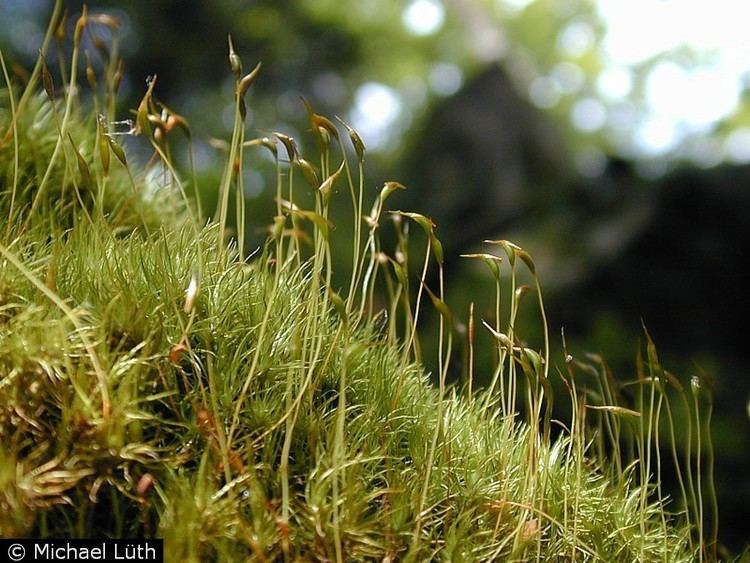
Broom forkmoss can be found across North America (except Labrador, North Dakota, Texas and Nevada), Europe, Asia, as well as in Australia and New Zealand
